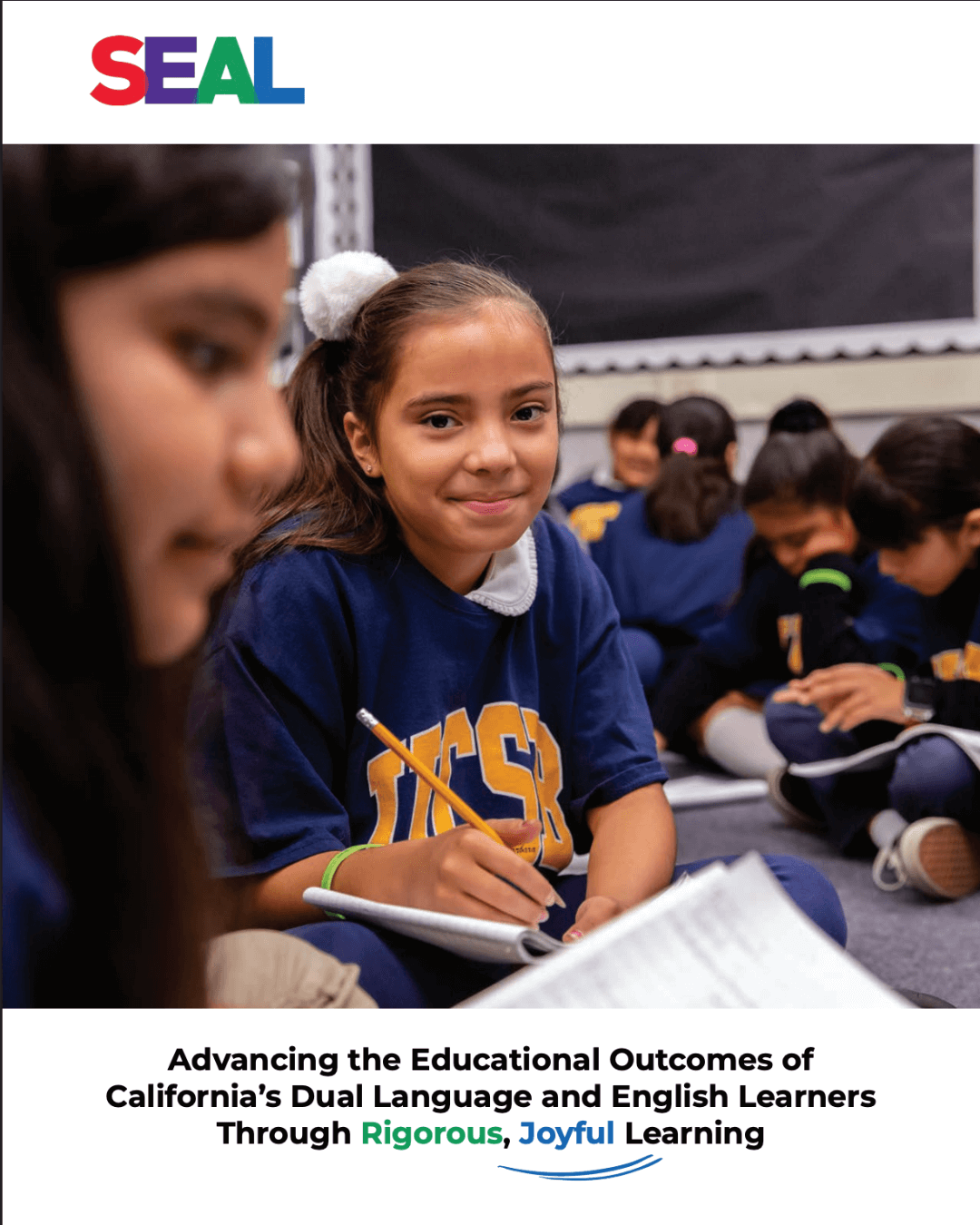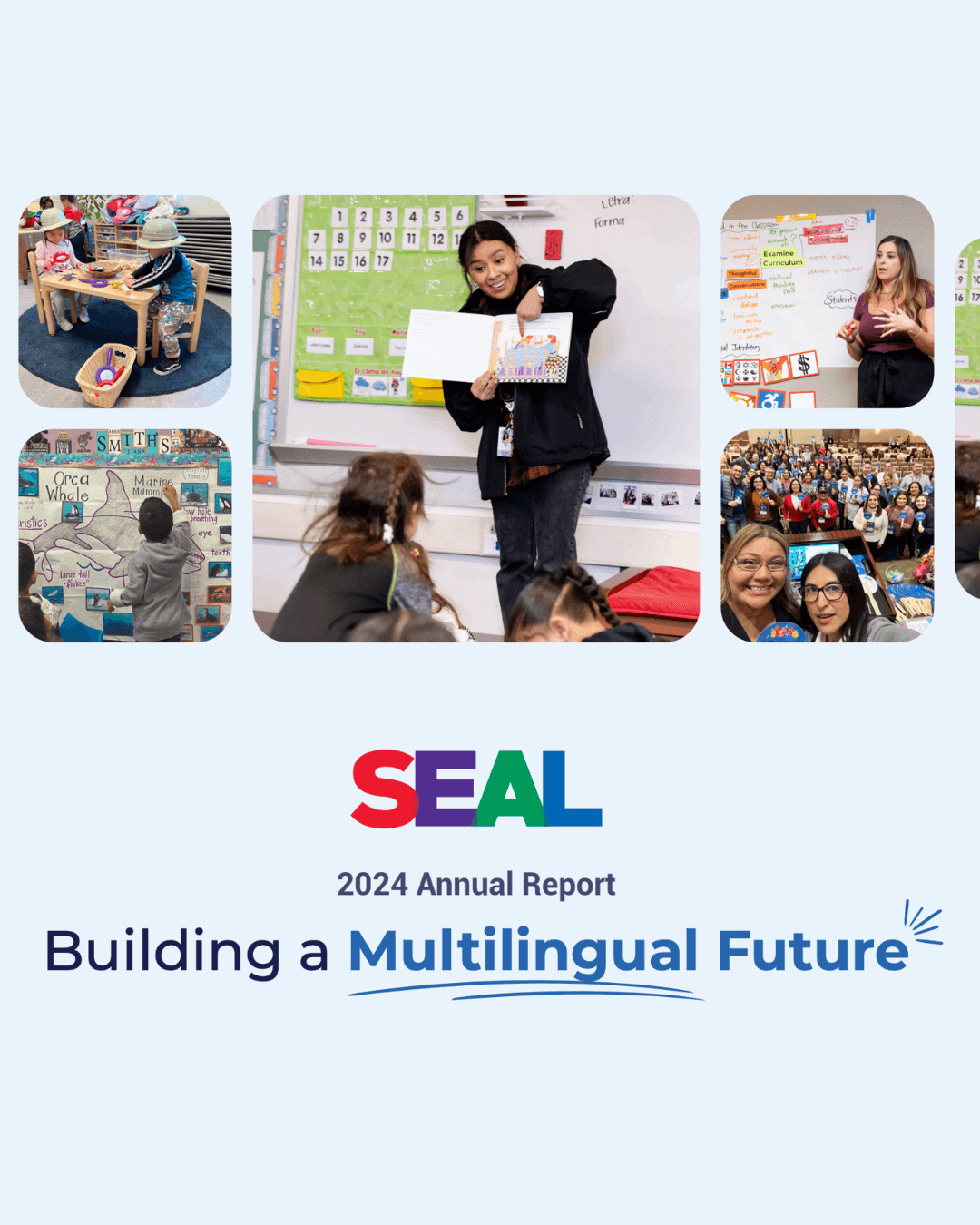SEAL Pilot Research Report

Executive Summary
Prepared by:
Kathryn Lindholm-Leary, Ph.D., Professor Emerita, San Jose State University
Website: www.lindholm-leary.com | Email: KLindholmLeary@mac.com
Revised March 9, 2015
This report provides an analysis of the Sobrato Family Foundation Early Academic and Literacy project in Redwood City and San Jose Unified school districts after four years of implementation. This report examines the progress of four cohorts of children who received one year of a SEAL preschool and then moved into a SEAL kindergarten through first, second, or third grade. The focus of this final report was on the general findings for SEAL students as a group. Outcome data are available for 391 Full SEAL and 372 Partial SEAL students (who received some SEAL program in the elementary grades but did not attend SEAL preschool).
The major question is: What do we know about the language, literacy, and mathematics development in grades PreK to 3 of the three student cohorts after four years of SEAL implementation? Students’ language, literacy, math development were assessed with five assessment measures in English and Spanish. Major findings include:
- Overall, there was a high level of implementation of SEAL components by project teachers, with most teachers strong in all of the instructional components.
- SEAL students entered preschool and kindergarten with a low level of language and literacy as measured in both English and Spanish. SEAL students at all grade levels demonstrated statistically significant growth on all measures of language, literacy, mathematics, cognitive, and social development in both Spanish and in English.
- Full SEAL students scored significantly higher than Partial SEAL students (who did not receive the preschool instruction); these results were particularly evident in second and third grades and this advantage was found in most assessments.
- SEAL students tended to show similar levels of growth and achievement in language, literacy, and mathematics achievement compared to their peers who were demographically similar; this was particularly true for Full SEAL students by grades 2-3.
- There is significant variation in the populations and outcomes across the three SEAL sites: There are significant differences in the levels of parent education across the three sites and varying degrees of growth in student language proficiency and academic achievement, but all sites show significant growth.
- By third grade (and fourth grade for the CELDT), students receiving Bilingual instruction scored similarly or higher than students receiving English instruction on the California English Language Development Test, the California Standards Test in both language arts and math, and the Standards Test in Spanish in both language arts and math.
- Fluent Spanish speakers scored higher than Limited Spanish speakers in second and third grades on all assessment measures in English.
- SEAL has had a significant impact on parents and literacy activities in the home: SEAL students come from homes with very low incomes ($27,384 per family of 4) and very low parent education levels(87% with high school or less). Most SEAL parents have at least rudimentary literacy skills in Spanish, though few parents have basic literacy or oral language skills in English. Yet, half of SEAL parents read books with their child on a daily basis and engage regularly in literacy-related activities. Further, parent engagement was significantly related to student outcomes.
Download to Read the Full Report
Download the Resource

Our Resources
Looking for more ways to engage your students and create a joyful learning environment? We’ve curated the best resources—from SEAL-approved tools for Dual Language and Multilingual Learners to videos that bring you directly into our classrooms —to give your students the opportunity to learn, thrive, and lead.

SEAL Overview Impact Report
SEAL’s Overview Impact Report showcases our mission, reach, and lasting influence on multilingual learners. Explore our story, see our statewide impact, learn how our pedagogy centers English Learners, and discover key lessons from our work with schools and communities.
%20copy.png)
Key Lessons from Over a Decade of Impact
When schools center language, culture, and community, English Learners don’t just succeed—they thrive. We’ve identified eight key lessons about what it truly takes to create schools where multilingual learners flourish. Download to read more about these key lessons.

SEAL's 11 High-Leverage Pedagogical Practices
Our 11 High-Leverage Pedagogical Practices equip educators to create rigorous, joyful, and language-rich classrooms where every student succeeds. By integrating students’ linguistic and cultural assets, SEAL fosters a learning environment that values home languages and empowers diverse learners to reach their full potential.

SEAL 2024 Annual Report
SEAL’s 2024 Annual Report highlights a year of growth, impact, and advocacy for multilingual learners. Explore stories, data, and milestones that showcase how we’re advancing educational equity and building a brighter future for all students.
%201.svg)